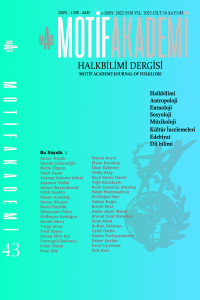SHAIKH HAMDULLAH SCHOOL IN THE ART OF TURKISH CALLIGRAPHY: A CASE STUDY FROM THE METROPOLITAN MUSEUM OF ART
SHAIKH HAMDULLAH SCHOOL IN THE ART OF TURKISH CALLIGRAPHY: A CASE STUDY FROM THE METROPOLITAN MUSEUM OF ART
Author(s): Seçil Sever DemirSubject(s): Cultural history, Visual Arts, Social history, The Ottoman Empire, Sociology of Art, History of Art
Published by: Motif Halk Oyunları Eğitim ve Öğretim Vakfı
Keywords: Shaikh Hamdullah; The Art Of Calligraphy; Ottoman Art Of Calligraphy; Turkish Art Of Calligraphy; Aklam-ı Sitte(Six Scripts);
Summary/Abstract: The art of calligraphy, also known as "hüsn-i hat" in Islamic culture, involves writing Islamic script in accordance with aesthetic principles. Executed using Arabic letters, this art form emphasizes the aesthetics and meaning of writing. The calligraphers, known as "hattat," adhere to rules to create Imagely pleasing scripts. The essence of calligraphy lies in expressing the aesthetics and essence of writing. Influenced by Islam's emphasis on writing and avoidance of imagery, calligraphy has become one of the most valued forms of Islamic art. This study aims to examine the contributions of the prominent Calligrapher Shaikh Hamdullah (1436-1520), a pioneer of Turkish Calligraphy, to the art through the example of a “thuluth and naskh hadith and poetry panel” Conducted through a literature review, this research delves into the Ottoman calligraphy, aklâm-ı sitte (six scripts), and the Shaikh Hamdullah school, focusing on his muraqqa at the Metropolitan Museum of Art. During the Ottoman era, aklâm-ı sitte styles like thuluth and naskh; muhaqqaq and rihani; tawqi and riq'a, evolved under Hamdullah's influence. His style of naskh calligraphy became the preferred method for transcribing the Quran across the Islamic world, giving rise to the Shaikh Hamdullah School. His contributions encompass Qur'an manuscripts, calligraphic panels, and muraqqas, held in prestigious collections worldwide. The tradition of granting, or certification, has preserved Shaikh's style, allowing his teachings to endure. The discussed artwork, a part of Shaikh's muraqqa album, features thuluth headings and naskh text lines drawn with ink and reed pen on marbled paper. In the work, which represents one of the most ideal example of the thuluth and naskh styles in calligraphy, onyl gold-painted mini flowers and rulers were observed as elements of illumanition.
Journal: Motif Akademi Halkbilimi Dergisi
- Issue Year: 16/2023
- Issue No: 43
- Page Range: 1203-1223
- Page Count: 21
- Language: English

